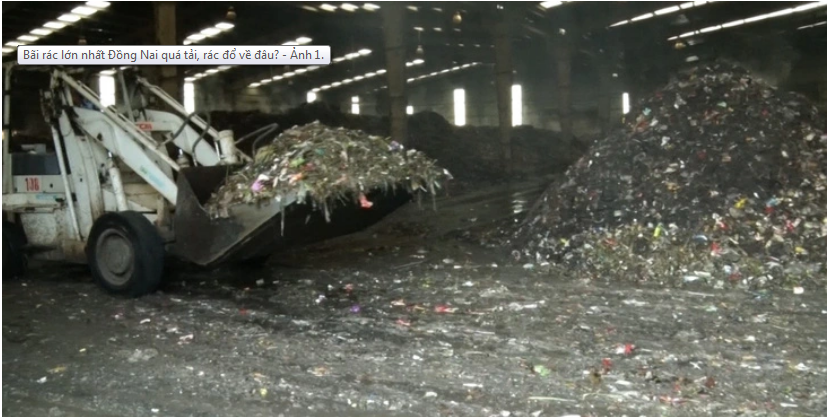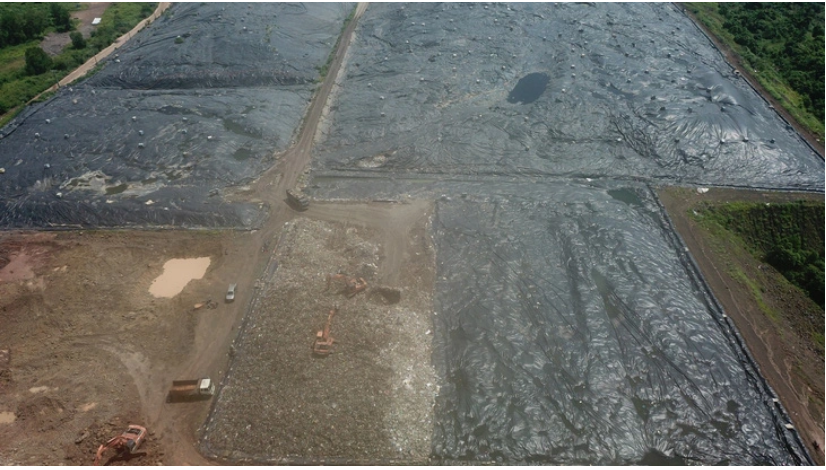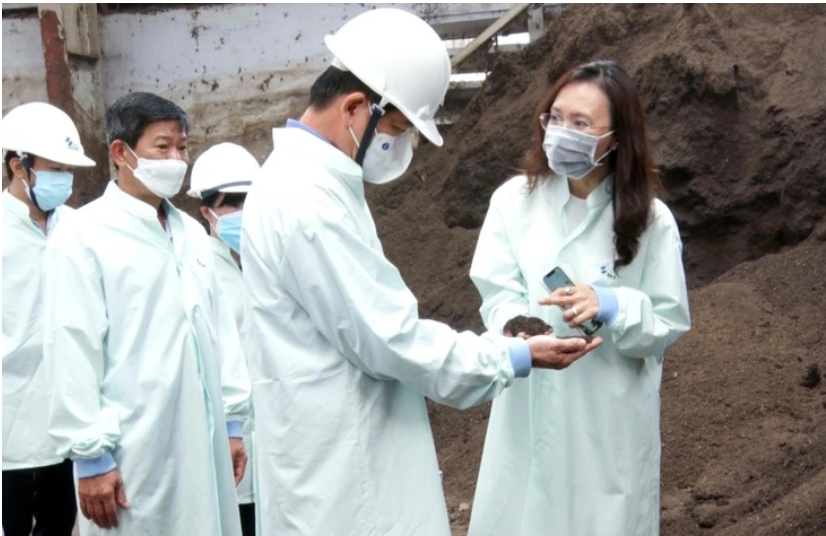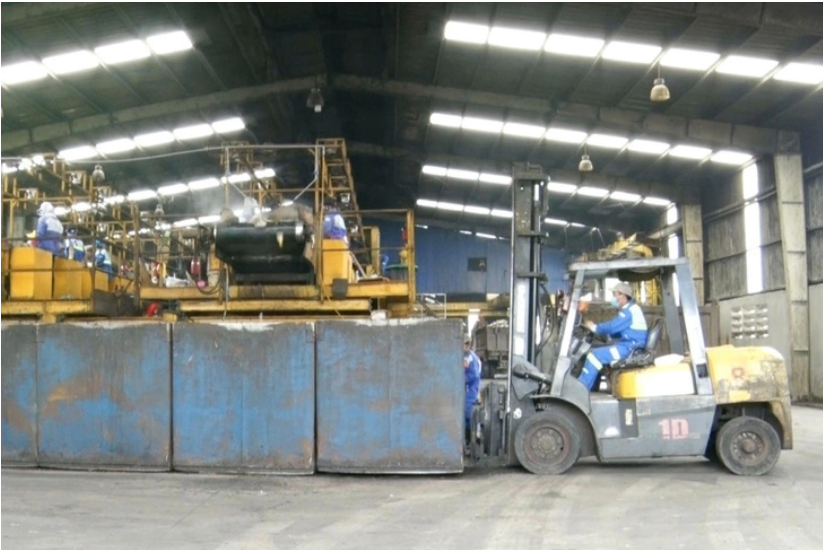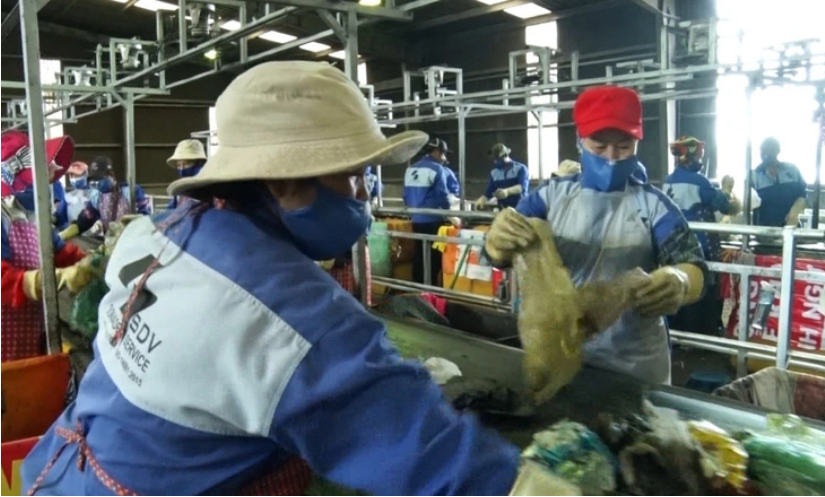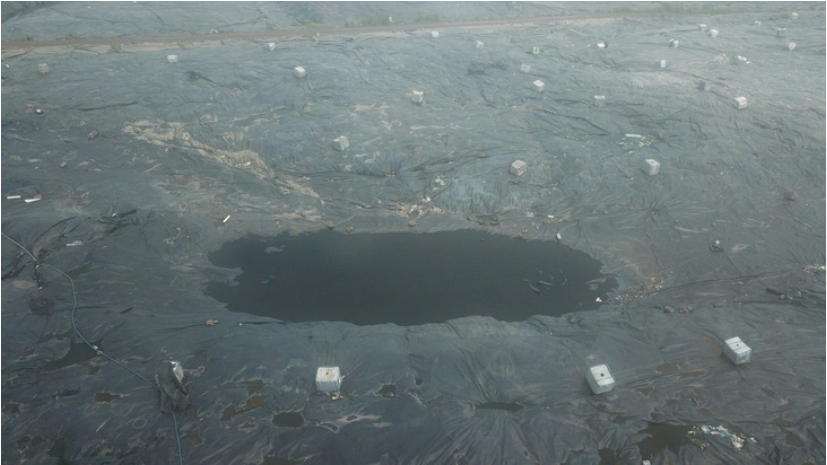Quang Trung waste treatment complex, the largest of its kind in Dong Nai Province in southern Vietnam, is now facing an overload.
The facility covering an area of 130 hectares was put into operation in 2009 and is currently receiving and treating garbage from eight cities and districts in Dong Nai, said Tran Thi Minh Hai, deputy head of the Natural Resources and Environment Division of Thong Nhat District, Dong Nai Province, where the facility is located.
The complex, costing VND650 billion (US$27.3 million), treats some 1,200 metric tons of trash per day.
It treats domestic and industrial waste using composting, ensuring the ratio of buried inert waste at below 15 percent.
The area for buried inert waste is lined and covered with canvas.
However, residents in the neighborhood have recently complained that the complex has been overwhelmed and gives off nauseating odor.
The complex initially had a capacity of 600 metric tons of garbage per day and assumed responsibility for treating waste of Thong Nhat District and Long Khanh City, according to the Natural Resources and Environment Division of the district.
The Dong Nai People’s Council later required cities and districts in the province to ensure the ratio of buried inert waste at below 15 percent. However, many cities and districts failed to comply with the requirement.
As a result, the provincial People’s Committee decided to move garbage from Bien Hoa City and Cam My, Long Thanh, Nhon Trach, Tan Phu, and Trang Bom Districts to the Quang Trung waste treatment complex.
The complex thus has to treat 1,200 metric tons of garbage per day.
The odor mainly comes from the composting process during the rainy season, the administration of Thong Nhat District explained.
|
|
| An aerial view of a corner of the Quang Trung waste treatment complex in Thong Nhat District, Dong Nai Province, southern Vietnam. Photo: H.M. / Tuoi Tre |
The district proposed reducing the volume of waste sent to the facility to improve its operation.
The volume of garbage treated at the complex is much higher than the approved capacity in 2009, according to Sonadezi Service JSC, the investor of the Quang Trung waste treatment complex.
Waste and leakage treatment systems at the complex have to operate at their maximum capacities. There is no time to maintain the area for buried inert waste either.
If the complex’s capacity stays unchanged, the facility cannot receive garbage from all cities and districts in the province by the end of 2023, according to Sonadezi.
The company has proposed adjusting the planning of the complex but has yet to get the nod for the proposal.
|
|
| Secretary of the Dong Nai Party’s Committee Nguyen Hong Linh (R, 2nd) during a visit to the Quang Trung waste treatment complex in Dong Nai Province, southern Vietnam. Photo: Thanh Truc / Tuoi Tre |
The Thong Nhat People’s Committee has suggested the Dong Nai Department of Natural Resources and Environment request waste treatment companies of cities and districts in the province to invest in technology to ease the pressure on the Quang Trung waste treatment complex.
The district informed that Sonadezi has proposed developing two more areas for buried inert waste but it will take four months to complete paperwork.
|
|
| A waste treatment line at the Quang Trung waste treatment complex in Dong Nai Province, southern Vietnam. Photo: Thanh Truc / Tuoi Tre |
|
|
| Workers of the Quang Trung waste treatment complex check and classify garbage. Photo: Thanh Truc / Tuoi Tre |
|
|
| Leakage from the area for buried inert waste at the Quang Trung waste treatment complex. Photo: H.M. / Tuoi Tre |
Like us on Facebook or follow us on Twitter to get the latest news about Vietnam!



